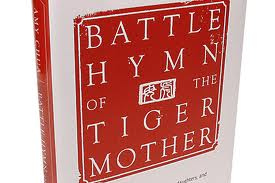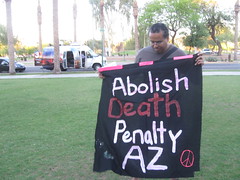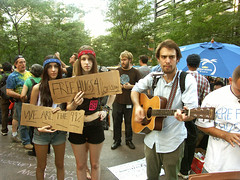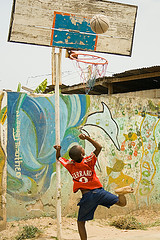If you haven’t seen it yet, check out the new post on the Editors’ Desk about the Scholars Strategy Network. As Doug Hartmann explains, this new network of social scientists is working to bring knowledge to a broader public. As part of this endeavor, they have written almost 90 policy papers, which are short (2 pages), accessible briefs on a variety of issues. These would be great supplements to course readings, so check them out!
Earlier this spring, TSP’s Sarah Shannon spoke with Robert Sampson about his new book, Great American City: Chicago and the Enduring Neighborhood Effect. Below are a few questions that could be used with this podcast in class!
1) According to Sampson, what is a “neighborhood?”
2) Provide a few examples of “neighborhood effects” that Sampson discusses in the podcast.
3) Why did Sampson choose to study Chicago?
4) What was the “Lost Letter” experiment, and what was the conclusion that Sampson drew from the results?
Doing some last minute planning for my Sociology of Gender course this summer, and happened upon a Toddlers and Tiaras episode (which I know is old news for most people!) but I had never actually watched it. Very interesting. And would be great for discussion in the classroom on the sexualization of children.
I started poking around Soc Images for some more resources and found so many helpful posts I had to share: on 7 years doing “All The Single Ladies”, girls modeling and sexualized toys, push-up swimsuits for young girls, and more sexualized modeling, , and a two year old in a Madonna cone bra.
Here’s a clip from Toddlers and Tiaras:
And a whole episode:
Here’s a clip many of you have probably seen of 7 year olds doing Beyonce’s “All the Single Ladies”
And another group of 7 year olds doing “My Boyfriend’s Back”
And, finally, here’s the cone bra:
In one of the latest episodes of Office Hours, TSP’s Sarah Shannon speaks with Stanford University Sociology Professor David Grusky about the social and economic effects of the recession. This entire podcast could be assigned to students, though you could also considering assigning part of it (the first 20 minutes, for example).
Grusky and Shannon cover many topics in this 50-minute conversation, so there are many avenues for discussion. Here are a few basic questions that cover some of the main points.
1) How does the most recent recession differ from past recessions? In other words, what makes it a “great” recession?
2) How does the recession affect inequality in the United States?
3) What are some of the responses to the recession, and how do they differ from responses to the Great Depression?
4) Why does Grusky see a danger in the focus on tax-based solutions to the current economic problems?
5) Grusky and Shannon speak specifically about college students several times throughout the podcast? How is the recession impacting students? Why is education an important part of this discussion?
Near the end of the podcast, Grusky mentions a website on recession trends that will be launching soon. Stay tuned to learn more about that website and how it can be used in the classroom!
 Last month, as a Special Feature on The Society Pages, Jennifer Lee (a sociologist at University of California at Irvine) provided our readers a sociological take on “Chinese mother phenomenon.”
Last month, as a Special Feature on The Society Pages, Jennifer Lee (a sociologist at University of California at Irvine) provided our readers a sociological take on “Chinese mother phenomenon.”
Lee is responding to Yale Law professor Amy Chua’s highly controversial book Battle Hymn of the Tiger Mother (2011). In advance of the book, The Wall Street Journal published “Why Chinese Mothers are Superior.” In the article and the book, Chua argues that Western parents do their children a disservice by not raising them with strict and demanding expectations for achievement.
Lee’s is another piece that is definitely going on my Sociology of Families syllabus in the fall, but it would fit well in any Intro to Sociology class or any class on education, culture, or youth. I would assign both Amy Chua’s WSJ article and Lee’s Tiger Kids and the Success Frame. What I love about Lee’s piece is that it does not reject Chua’s argument outright, but explores it from a sociological perspective. She asks (and answers):
How do we explain the academic achievement of Asians, especially when the patterns defy traditional status attainment models?
This topic is especially suited for most undergrads (18-22 year olds) in that they have only recently left their parents home and generally do not have families of their own. This life stage puts them in a unique position to compare how they were raised with how they want to raise their own (hypothetical) children when it comes to educational achievement.
For further context, check out the audio review of Chua’s book and parenting method on NPR and an excerpt from the book, as well as a response from Amy Chua to reader’s questions and a response her oldest daughter (age 18) to the criticism her mom received after publishing Battle Hymn.
One of TSP’s newer additions is The Reading List, which is (the start of) a compilation of both classic and new research that can help inform our understanding of current events. Soon, it will be organized by theme, so don’t forget to check it out as you plan your courses!

The Office Hours Team recently sat down with Dr. David Garland, professor of sociology and law at New York University. He spoke with the team about his most recent book, Peculiar Institution: America’s Death Penalty in the Age of Abolition. The podcast, found here, would be a great assignment, as it provides a concise review of key arguments he makes in the book. Below are a few discussion questions you could use in class or assign with the podcast.
1) In Garland’s eyes, why is the death penalty a peculiar U.S. institution?
2) What reasons are usually given in favor of the death penalty in the U.S., and what does Garland think about them?
3) Are there patterns found among defendants on death row?
4) Do you have an opinion about the use of the death penalty in the U.S.? If so, what is it?
5) What is one thing you learned from this podcast?
If the questions are assigned as homework:
6) Conduct some quick online research. When did states start outlawing the death penalty? How many states allow it?
Every semester I use an activity from the journal Teaching Sociology to teach about class inequality. The article describing the activity can be found here. The authors, Catherine L. Coghlan and Denise W. Huggin have designed a game that really helps students understand the difficulty of class mobility.
From their abstract:
Social stratification may be one of the most difficult topics covered in sociology classes. This article describes an interactive learning exercise, using a modified version of the game Monopoly, intended to stress the structural nature of social inequality and to stimulate student reflection and class discussion on social stratification in the United States. The primary focus of this exercise is to help students experience different levels of social stratification and to challenge the idea that individual talents or aspirations are enough to overcome structural barriers to upward class mobility. Student reactions to the experience suggest that it is an effective tool for demonstrating the structural nature of social inequality in the United States and for stimulating discussion on social inequality and related topics. This exercise has worked well in introductory sociology, social problems, and social inequality classes.
I don’t want to say too much about the activity (don’t want to risk copyright laws or plagiarism) so, instead, I’ll leave you to read the article on your own. What you should know, however, is that in all of my evaluations my students (Introduction to Sociology and Social Problems) cite this as one of the most useful activities they have ever had in a college classroom.
Every semester in my Introduction to Sociology courses, I offer students the option of completing the standard course assignments (midterm exam, final exam, memoir paper, reading quizzes) or undertaking a more comprehensive challenge: envisioning an alternative to current economic systems. This assignment encourages students to challenge hegemonic ideas of the economy to develop a new theory of how to run a functional society. Here is the assignment in more detail:
Envisioning Alternatives to Capitalism, Socialism and Capitalism
The goal with this assignment is for students to envision an alternative economic system that would benefit all human beings, as well as the planet more broadly.
It is required that students engage with sociology through the process of this activity. They must set up an awareness of the current economic systems (capitalism, socialism, communism), their weaknesses and strengths, using course material. In the process of developing an alternative model the other social problems discussed in class (gender inequality, racial inequality, crime, health inequality, educational inequality, food and the environment, etc) must also be considered. It is expected that course readings be used (and cited) in this project.
The product can take many forms, not limited to the following suggestions: essay, charts, presentation, artwork, video, or a combination thereof. However, in order to get credit as a replacement for other coursework, it must be of high quality.
It is my vision that there will be some “back and forth” between student and professor over the course of the semester. Perhaps the student would present ideas in some form, send it for professor feedback, and add more material as the course continues.
To recap, the student must:
1) Engage with course material about the current economic systems of:
– Capitalism
– Socialism
– Communism2) Present the strengths and weaknesses of the current models, as explained in the class readings. This would include issues related to:
– Gender Inequality
– Racial Inequality
– Crime and Punishment
– Health Inequality
– Educational Inequality
– Food and the Environment3) Develop a well thought out alternative that would provide solutions to the aforementioned problems.
The final draft will be due on the final exam date, but students should present different elements of the project over the course of the semester.
This semester I have my first student taking the challenge. I’ll keep you posted on how the project goes!




